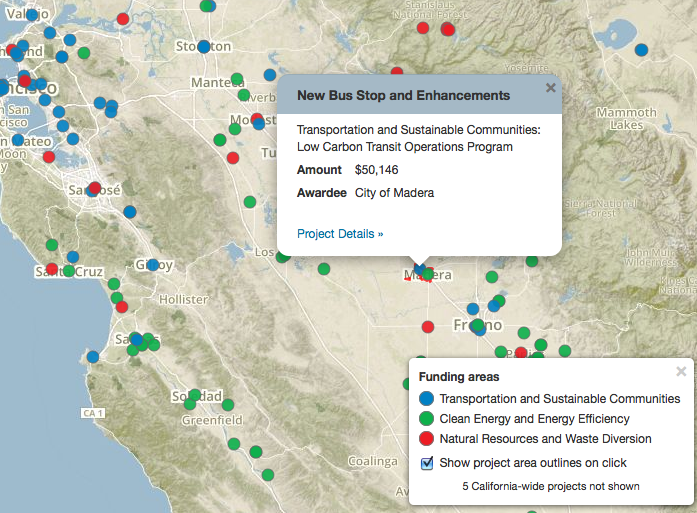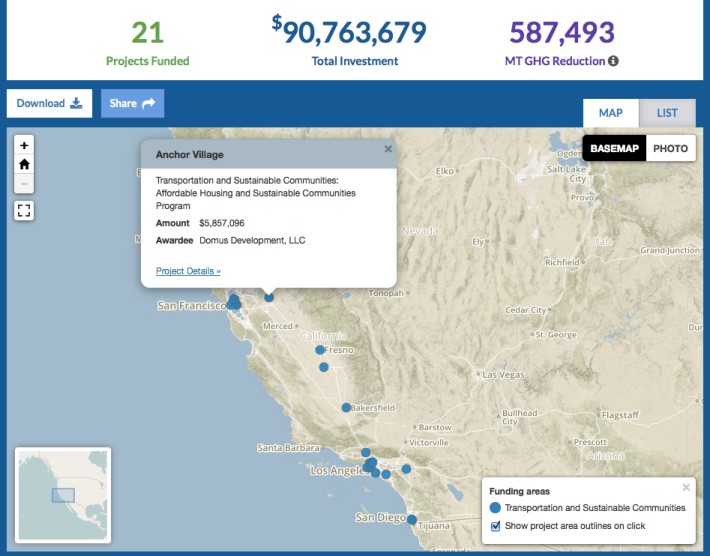
TransForm has updated and relaunched its Climate Benefits map, adding new data and a video about California's climate investments. The map now includes a user-friendly “tour” to help people understand and search for data on where California's cap-and-trade revenue goes.
TransForm's map is currently the only detailed, user friendly information available on the benefits produced by California's Greenhouse Gas Reduction Fund investments. It launched last summer, and has been updated as agencies provide data. TransForm made it easier to search for projects in specific geographic areas, including districts and counties. They also simplified the tool to make it more intuitive and easy to follow.
The California Air Resources Board (ARB) does not have a similar tracking tool, at least not yet. On the ARB website, you can find maps of emissions in the state, but the agency has not yet developed a central data point for the programs funded by cap-and-trade. At least twelve agencies administer programs that receive cap-and-trade funding—although with allocations still undecided, that number may change—which makes collecting and publishing data a challenge. Each program has its own reporting requirements, and each agency its own process for reporting.
There still is no simple answer to the question that grandstanding legislators have been eager to ask, namely, “how much greenhouse gas emission reduction are we getting per dollar spent?” TransForm hopes to be able to provide a searchable database in the future that will include estimates of emission reductions for all the individual projects mapped. For now, users click through to individual projects to get that data.
In addition, TransForm depends on state agencies to provide information, and sometimes it is not so simple to get it.
For example, the Clean Vehicle Rebate Program (CVRP) gives rebates to people who replace polluting cars with electric vehicles. “The program has multiple sources of funding,” said Ryan Wiggins, TransForm's Climate Policy Manager, “not just the Greenhouse Gas Reduction Fund. We've been asking them to separate out funding information, so we can identify, for example, how much of each rebate per vehicle is from the GGRF, and whether that money benefits a disadvantaged community or not.”
The CVRP also gives money directly to individuals, and the agency is understandably reluctant to release data that can inadvertently include private information. Therefore that data needs will need to be mapped in a way that does not reveal information about individuals.
For now, TransForm's map is the go-to place if you have questions about what the cap-and-trade revenue is invested in. The Air Resources Board's annual GGRF investments report is due soon (here is a PDF of last year's report), but even that will not have as much project-specific data as TransForm's map.

TransForm is also working with the Greenlining Institute to collect stories about projects funded by the GGRF. Greenlining has been posting stories of Californians benefiting from climate policies for a year or so, and now the two organizations together have produced a short video about how the Affordable Housing and Sustainable Communities program will make it possible for families to live near jobs and transit. The video features an interview with Christopher Cabaldon, mayor of West Sacramento, where affordable housing is being build near the state capitol.





